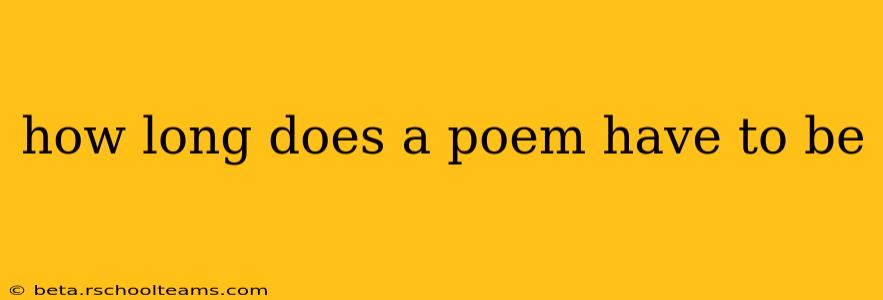There's no single answer to the question, "How long does a poem have to be?" Unlike, say, a sonnet which adheres to a strict 14-line structure, the length of a poem is entirely up to the poet. A poem can be as short as a single word, or as long as an epic narrative spanning thousands of lines. What truly defines a poem isn't its length, but its use of poetic devices, imagery, and emotional resonance.
What are the shortest poems?
Some of the shortest poems ever written are single-word poems, like "Silence" by Aram Saroyan. These minimalist pieces rely on the impact and suggestive power of a single word to evoke a complete thought or feeling. This highlights that brevity itself can be a powerful poetic tool. Other extremely short poems might consist of a couplet (two lines) or a tercet (three lines). Their length is dictated by the poet's intent and the impact they wish to create.
What are the longest poems?
On the other end of the spectrum, epic poems like Homer's The Odyssey and The Iliad are monumental works extending to thousands of lines. These sprawling narratives explore complex themes, characters, and journeys, proving that a poem's length can expand to encompass vast storytelling potential. Modern examples of extremely long poems also exist, often pushing the boundaries of traditional poetic forms.
What determines a poem's length?
The length of a poem is determined by several factors:
- The subject matter: A short, sharp observation might only require a few lines, while a complex narrative or philosophical exploration may demand thousands.
- The poet's style: Some poets prefer concise, minimalist forms, while others favor expansive, flowing narratives.
- The intended effect: The poet's aim—whether to create a fleeting impression, tell a complete story, or evoke a specific emotion—will significantly impact the poem's length.
Does the length affect the poem's quality?
Absolutely not! A poem's quality isn't determined by its length. A short poem can be profoundly moving and impactful, while a long poem might be rambling and ineffective. The key is the poet's skill in crafting language, imagery, and structure to create a cohesive and meaningful experience for the reader, regardless of line count.
How can I determine the right length for my poem?
Let the poem itself guide you. Write until you feel you've fully explored your subject, communicated your message, and achieved the desired emotional effect. Don't artificially constrain or extend a poem simply to meet a certain length; let the natural flow of your creative process determine its final form. Trust your instincts and revise until the poem feels complete and resonant.
Can a haiku be longer?
No, a haiku, by definition, is a three-line poem with a specific syllable structure (5-7-5). Deviation from this structure means it is no longer considered a haiku. This illustrates how some poetic forms have strict length requirements, contrasting with the freedom offered by other forms.
Are there different types of poems with varying lengths?
Yes, numerous poetic forms exist, each with its own conventions and typical length. Sonnets are typically 14 lines; limericks are always five lines; villanelles have a specific structure involving nineteen lines. However, even within these forms, poets may experiment with variations in length or structure. The key takeaway is that while some forms have set lengths, the overall concept of a poem allows for immense flexibility.
